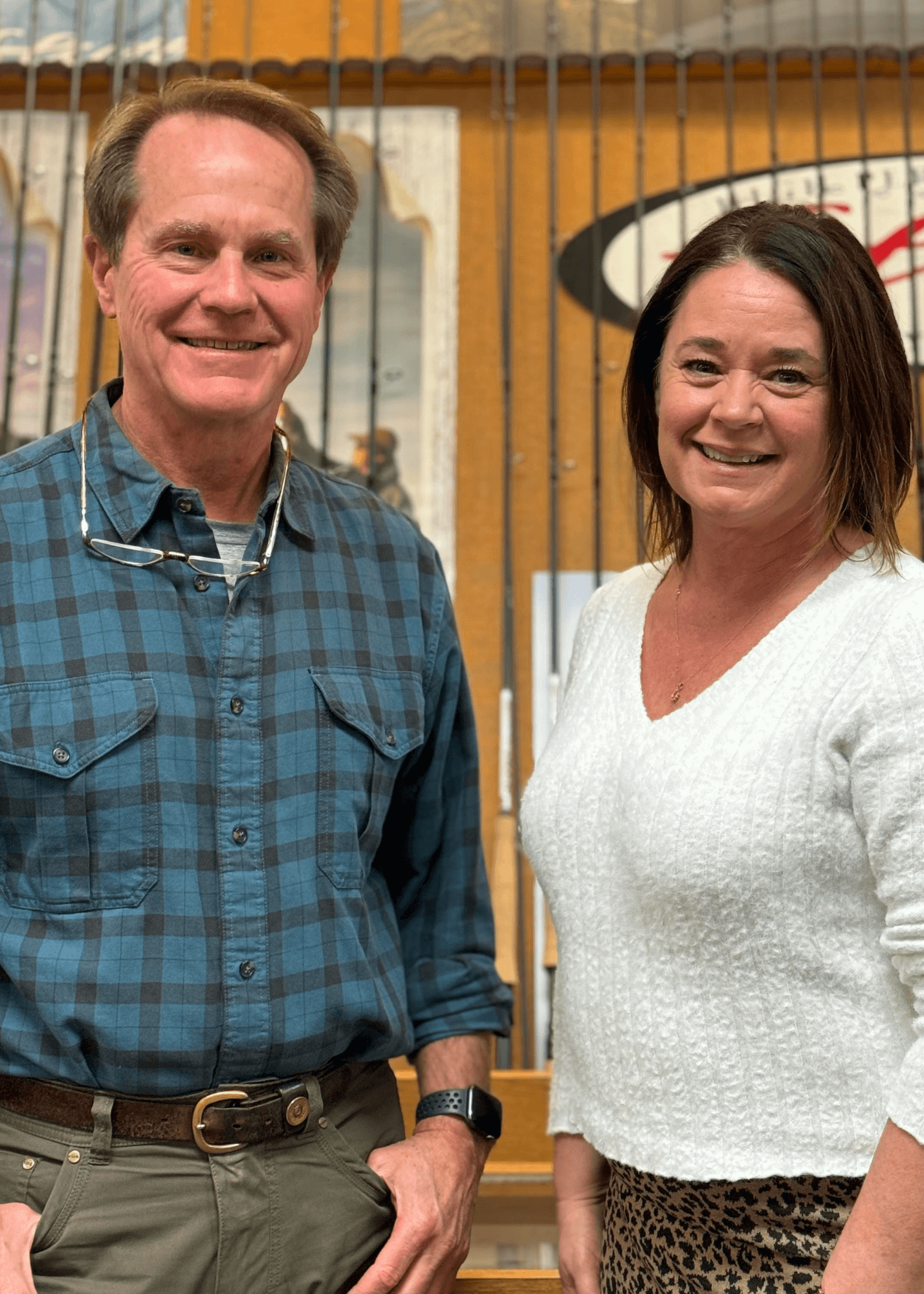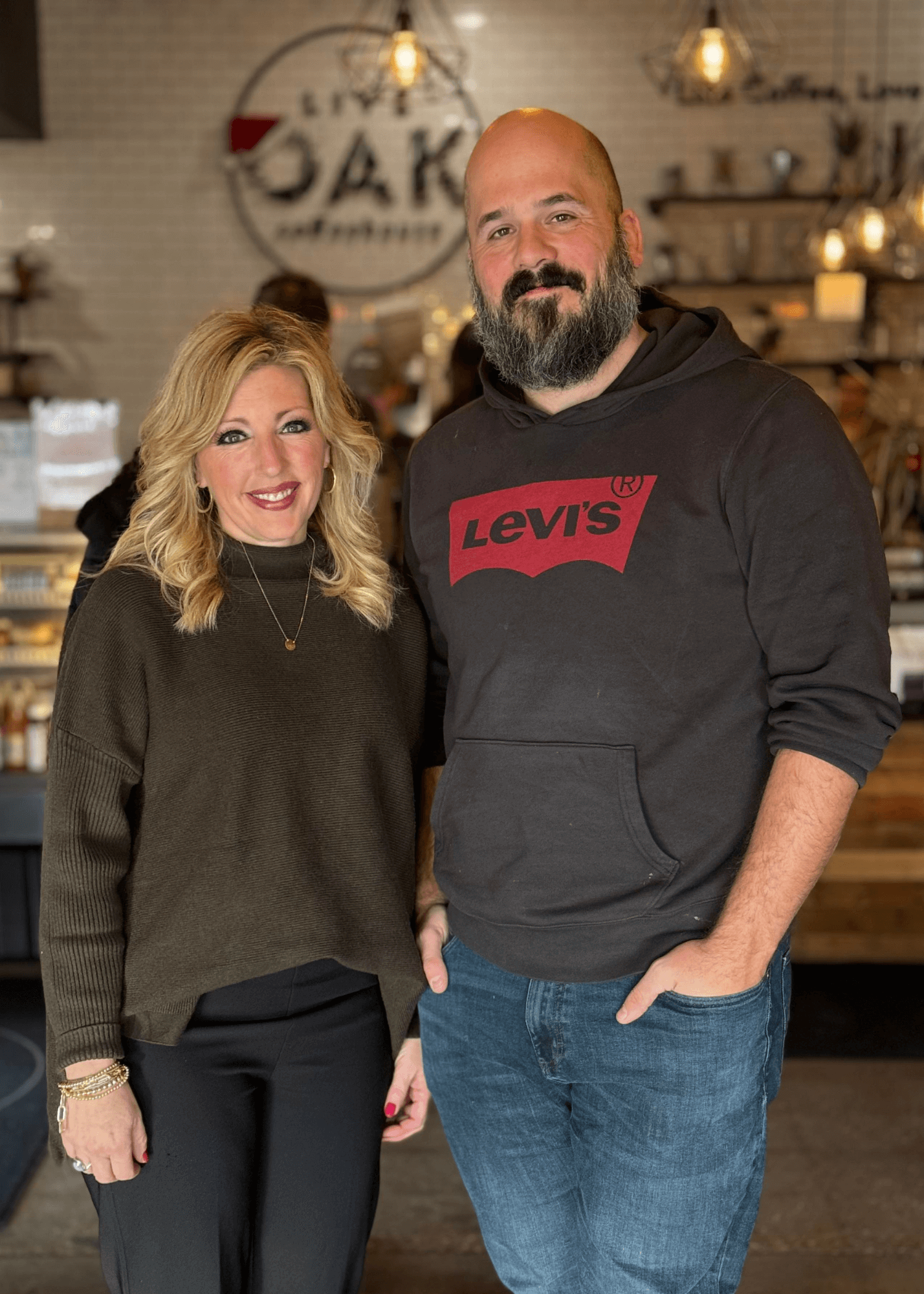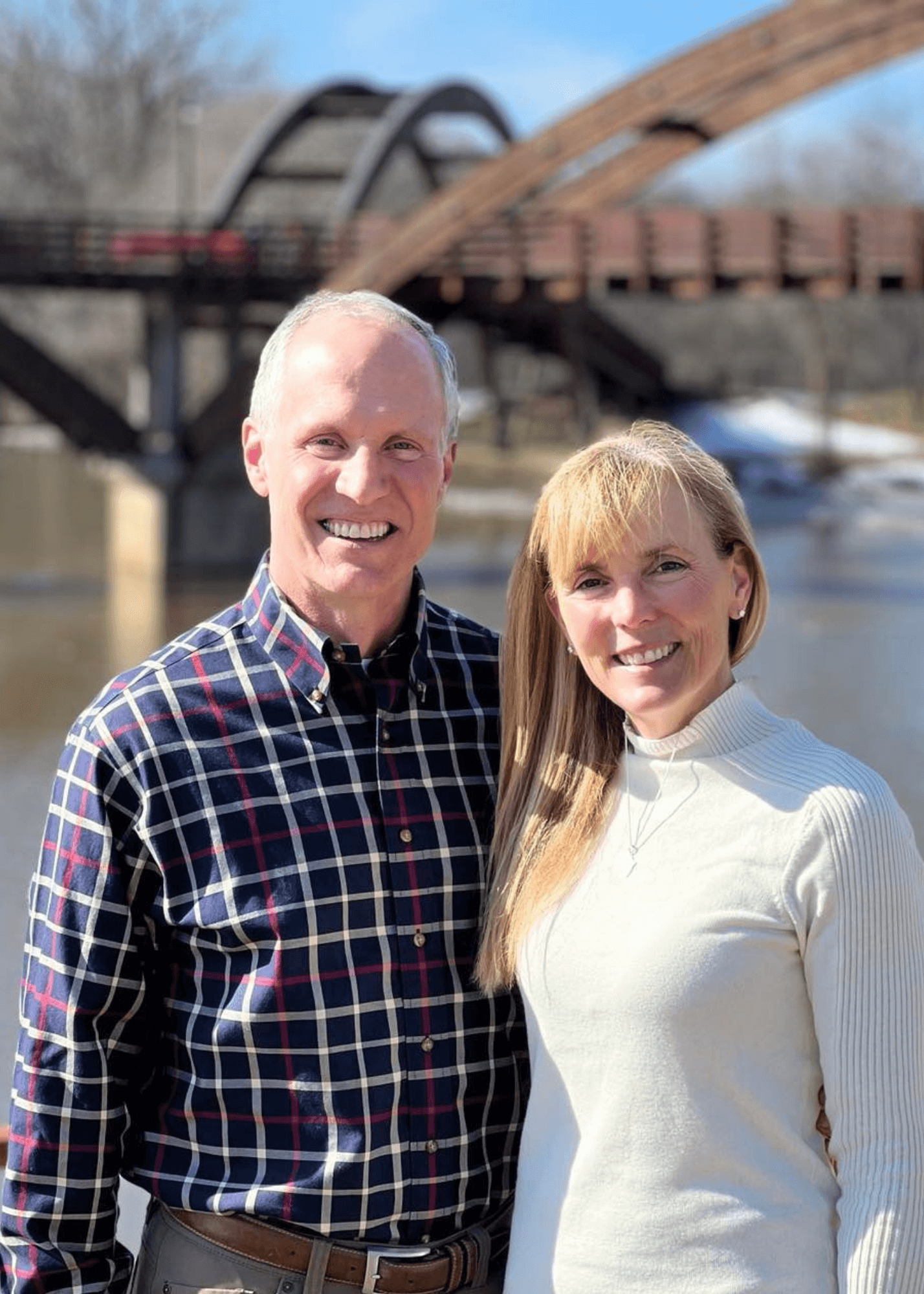Prologue: In 2017, the City of Midland significantly changed its downtown streetscape. The project began with a $7 million gift from local family foundations. It was completed through a crowdfunding campaign facilitated by the Michigan Economic Development Corporation (MEDC) and the Midland Area Community Foundation. The campaign was offered through Michigan-based crowdfunding platform Patronicity. The crowdfunding component of the project led to the installation of amenities like the beloved fireplaces, chess tables, and seating configurations. The campaign surpassed its crowdfunding goal of $50,000 and won a matching grant with funds made possible by MEDC’s Public Spaces Community Places program. In addition, the Midland Area Community Foundation matched donations 2:1, up to $100,000. The streetscape continues to be a hit with Midland residents, as thousands visit Downtown Midland to gather yearly, thanks to the wider and more welcoming streetscape.
Bo Brines and Selina Harris – In Their Own Words, Documented by Kevin LaDuke
Selina: “I’m the Community Affairs Director with the City of Midland. I oversee the internal and external communications functions for the City, MCTV (Midland Community Television), and two tax increment financing districts – Downtown and Center City.
I started with the City of Midland fresh out of college at 22 years old, and at the time, I was the Community Relations Coordinator. There was no community relations position for the City at that time. So, I kind of set the stage for all the public relations efforts that we do today. Of course, our approach has been modified and updated over the years. In 2003, I took on the City Clerk function in addition to my work in community affairs. In 2009, I took on the Downtown Development Authority (DDA) and I added the Center City Authority (CCA) a few years ago and dropped City Clerk function. So, there have been a lot of changes, but the City definitely keeps it interesting.”
Bo: “My father was in business Downtown, so I was one of those kids running around here. He was partners with Jack McCandless at McCandless Hallmark, which was the next block over from where we’re standing now [Little Forks Outfitters]. I kind of grew up Downtown.
I developed a real passion for fly fishing, hiking, and outdoor pursuits. While traveling out west, I saw many shops that didn’t exist here. In the nineties, a movie called “A River Runs Through It” created a huge interest in fly fishing. Fly shops were opening everywhere, and I knew the Orvis Regional Business Manager. In passing conversation, I learned that Mid-Michigan and the Tri-Cities were one of the places Orvis had identified through their mail order business as a place that a shop could do well. I started looking into it, and the more I checked into it, the more I was like, ‘Boy, this looks really doable.’ Around the same time, Carl Gerstacker and some of our community’s other forefathers established the DDA and completed the initial streetscape. Looking around the Tri-Cities, the only place I saw that looked like it had the potential to be an upscale and pedestrian-friendly retail location that would be suitable for my business was Downtown Midland. So I came down here with my wife, and they had just built the Ashman Court Hotel, which ended up becoming The H. We had dinner outside at Ashman Court. Then we had an espresso at espresso Milano. And it was like, ‘Wow. This is a cool vibe developing here.’ I was in my 30s, and we didn’t have kids at the time. I decided it was time to do this.
In 1995, Little Forks Outfitters opened. It’ll be 29 years old this June. We’ve added brands and found niches to represent in this marketplace. Together, with the growth of Downtown, it’s been a lot of fun and rewarding for me. I had ancestors in business here when Herbert Henry Dow came to town. I’m a descendant of the Reardons, and the Reardon Brothers’ Dry Goods and Grocery Store was in business on Main Street when Herbert arrived. It just feels like I’m in the right place. It has been a cool journey.
The modern streetscape project supported the vision of a pedestrian-friendly corridor. When we made these plans at the DDA level, we wanted to have several different events and develop a streetscape with no curbs. It was a foreshadowing. There’s no way we could have predicted COVID-19 and the pandemic, but as a result of the pandemic, we were able to close the streets off and develop the middle blocks as pedestrian plazas. The streetscape plan we built is perfect for it and couldn’t have been designed better. What it’s done is create a space where you don’t have to worry about vehicles. When we open the streets back up, I must be careful not to walk across. You get really used to having that open space there. It’s brought a lot of families Downtown, and everyone is very comfortable bringing their kids down here and not having to worry about traffic. It functions as a place for people of all ages to come and hang out and chill. I see groups of women coming down in the mornings, having a cup of coffee, and just visiting. I see families coming out. I see people that are working down here coming down for lunch. Opposed to 1995, when we opened up, so much more is happening. Now, any time of the day, any day of the week, you walk outside, and you’ll see people. That’s the proof that this is working. Indeed, we’ve done an excellent job with the programming. It’s a cool vibe.”
Selina: “Around five years into my work with the DDA, we worked on our strategic plan and modified our mission statement to add social gatherings to our mission statement to convey that downtown wasn’t just a place for commerce and business – it’s also a gathering place to socialize. We began to see people were using Downtown as more than just a place to shop, dine, and leave; they were using it as a social gathering space. That set the tone when we began the streetscape renovation. We looked at social opportunities for the streetscape, which led to the fireplaces – one of the things we’ve become known for. Annually, we receive questions about how the fireplaces came to be and how other communities can seek approval. Another area of social gathering we explored was seating – how people gather and seat themselves Downtown. We obtained Adirondack chairs, which have been a huge hit and are used year-round. We view Downtown as a source of economic development and a catalyst for socialization.
Community members were responsible for adding the fireplaces and other amenities through a crowdfunding opportunity. We had the generosity of local family foundations to start the streetscape project, and the amenities were added thanks to a crowdfund that the Michigan Economic Development Corporation and Midland Area Community Foundation matched. We also had various foundational and individual supporters like the Patricia and David Kepler Foundation for the monuments on the corner of M20 and Main Street to set the stage for Downtown as folks travel through the area. We really had huge support from individuals and other organizations in the community as we added the fun things – the icing on the cake, to complete our streetscape construction.
I think the MYPros (Midland Young Professionals) element we have in our community is excellent. Instead of being passive attendees at local restaurants and stores, they are very active if they see a startup business that they want to flourish and thrive. Our MYPros are actively engaged in getting that entrepreneurial spirit up and running in Midland. That says a lot for our community. The young people who want to be here want to be surrounded by their favored retailers and restaurants. I’ve always been impressed when young professionals join to support new businesses.”
Bo: “We used to have stoplights on Main Street when more folks were driving through Downtown to get to work. That hasn’t happened in quite a while. Removing the stoplights and turning the intersections into four-way stops immediately made Downtown more pedestrian-friendly. It’s also good for vehicular traffic because you don’t have to sit at a stoplight when there’s no one in opposing directions. I see many people that come from other communities – you know, Saginaw, Bay City, and even places like Traverse City. They’ll come down here to use the Pere Marquette Rail Trail. Then, we’ve got the Chippewa trail to the Chippewa Nature Center. Trails are heading in the other direction now, too. It’s all a work in progress, but it’s something that’s very much on our radar.
My vision for Midland is being realized step by step. We’re fortunate to have foundations and community leaders that are benevolent in their interests. They’re wise and have a lot of foresight for creating a community you can be proud to come from – a community you can be proud to live in. From the standpoint of attracting the best talent, we must keep things moving forward. That’s our big blessing as one of the Tri-Cities – we have an economic engine that works and attracts energetic, bright people to town. I think, overall, we’re heading in the right direction.”




